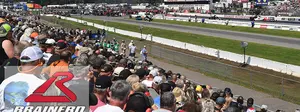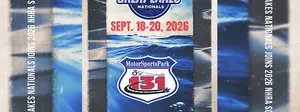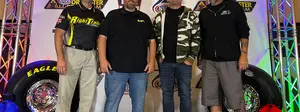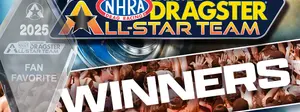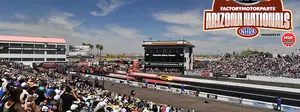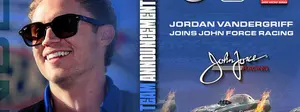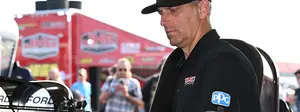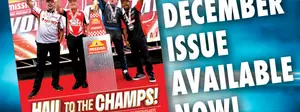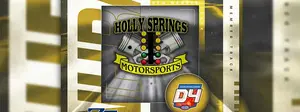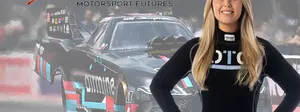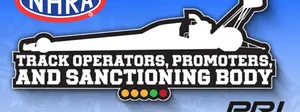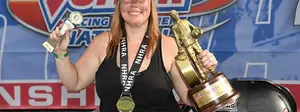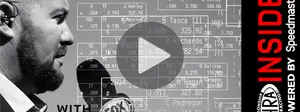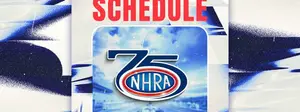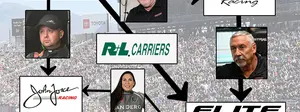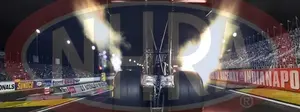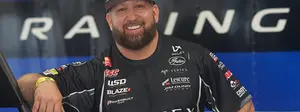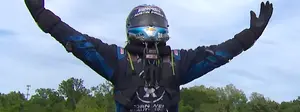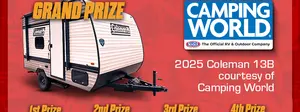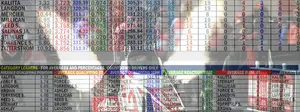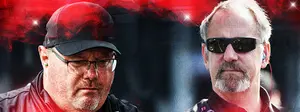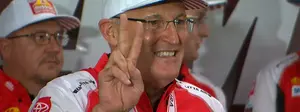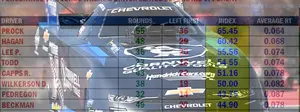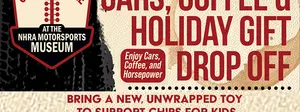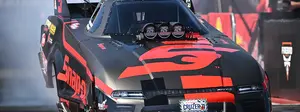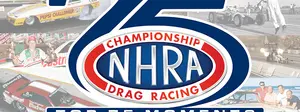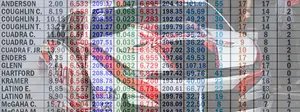

Smarty pants
Today’s history lesson on wheel pants comes out – literally -- of the clear blue sky from fellow drag racing history freak Bret Kepner, who pointed out that, “It was the airplane racers of the 1920s who, while competing in one of the top spectator sports of the day, attempted to streamline the non-retractable landing gear of the early biplanes and monoplanes to decrease drag and gain speed.” Alternately called "fairings" or "spats," these aero aids can still be found in place today.
Kepner also pointed me toward what almost assuredly is the first earthbound vehicle to use wheel pants, which Kepner figures was inspiration for Craig Breedlove and his wheel-pants-equipped Spirit II slingshot of 1964.
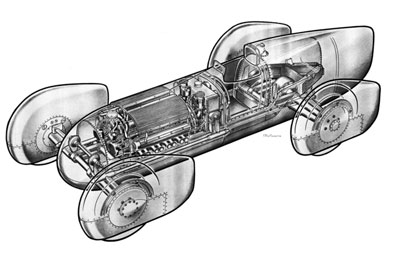 |
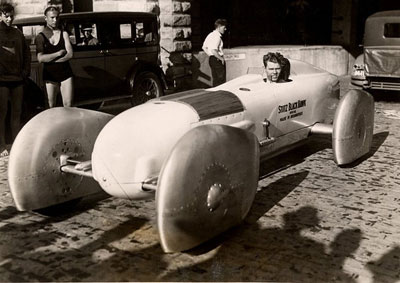 |
“Like all hot rodding kids of the '40s and '50s, Breedlove was heavily influenced by the long list of land-speed-record racers who were making attempts since prior to the turn of the 20th century,” Kepner wrote.
"Breedlove was active in dry-lakes racing during his early drag racing career and was well aware of the LSR series. Those who remembered the pioneers in all-out speed efforts knew, from the minute they saw them, that Breedlove's front-wheel coverings were almost direct copies of those on the ill-fated Stutz Bearcat LSR vehicle of Frank Lockhart, which ran well over 200 mph in 1928 before killing its driver on the sands of Daytona that year. Lockhart is often credited with inventing the term 'wheel pants,' but, in fact, the air racers were using that moniker a decade before him.”
Kepner pointed me to this page, www.automobiliac.com/automobiliac/tag/frank-lockhart, which has a pretty thorough accounting of the effort that ended tragically on April 25, 1928.
Lockhart’s record effort was remarkable in that he flipped common form on its ear, going away from designs like Malcolm Campbell's Bluebird -- heavy cars powered by airplane engines – in favor of a small lightweight powered by a 16-cylinder automotive engine (two straight 8s mounted together) and adding the wheel fairings to aid the aero.
Lockhart’s fairings were locked in place and did not turn with the wheels, which had only a small degree of movement, which may have led to his demise when he lost a tire at speed. An earlier crash had forced him into budget mode, and he scrimped in the wrong places, trading proven Firestone tires for less reputable Mason rubber in exchange for $20,000 in "sponsorship money" from the company.
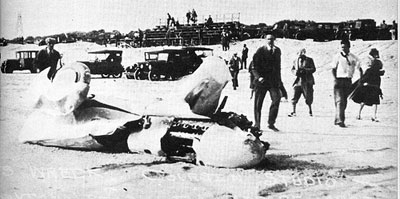 |
Attempting to better the record of 207 mph, he made a run of more than 200 mph into a headwind, and, with a high tide closing in on the Daytona beach, he quickly turned his car around for a downwind sprint. Because the fairings took so long to remove and reattach, Lockhart did only a cursory examination of the tires and did not see that the right rear tire had been cut by a seashell. Perhaps the cut had been under the portion of the tire hidden by the pants.
The tire gave out on the return run at about 225 mph, and the 26-year-old speed seeker – perhaps handicapped in his recovery efforts by the fairings -- lost control of the car, which overturned multiple times, throwing him from the car and killing him instantly. The page linked above includes many more photos of the car, a video of the crash, and a diagram explaining the crash. Interesting story; thanks, Bret.

Tommy Naccarato has fond memories of the Breedlove machine from the early 1970s, when his grandparents lived in North Hollywood, Calif., home to George Barris' Kustoms.
“I had been fortunate to make a pest of myself there on many occasions -- and those that know me will attest to this tenacity of my personality, which no doubt weighed heavy on Mr. Barris himself on occasions,” he admitted. “On one of my trips there, I noticed a rather long covered dragster-looking car. Knowing I was going to get in trouble for peeking, I did exactly that until caught, but in very uncharacteristic Barris fashion was told that I could take the cover off, only if I put it back on after I was done. I lifted the cover, and, sure enough, there were the front-wheel-pants fairings, painted stars and stripes, red, white, and blue, and instantly I knew I had struck gold in the dragster department.
 |
“I gently but quickly removed the rest of the car cover, and here was Craig Breedlove's Spirit II, which I had only seen in pictures up to that point, and it had been obviously repainted from its original ‘Breedlove Blue,’ which seemingly graced many of his other race cars. I was transfixed on the car for a good two hours plus, just standing there looking, thinking, dreaming of how glorious this car must have been on the track in its day, which, looking back, wasn't all that many years before.
“While in this dream stupor, a Barris customer with his girlfriend came up to me and was looking at the car himself and fell prey to my giving him a detailed history and tech specs of the car itself. This went on for many minutes. He then turned to his girlfriend and said, ‘Honey, I don't think I've ever seen a kid that loves a car more!’ All of this action of course got Barris to come out of his office to make sure I wasn't driving one of his customers crazy. The guy picked up his Pantera, which Barris Kustoms had been working on, and away he and the girlfriend jetted into the afternoon sun. It was here that Mr. Barris said to me, ‘Kid, you don't even know who that was, do you? That was Jermaine Jackson of the Jackson 5.' Now please, get the dragster covered back up!’
“That was the last time I had seen the Spirit II, that is until seeing images of it in Garlits' museum and reading of its journey to that haven of once-famous race cars in your column. I can only hope more old great race cars never die but go to heaven in a museum as such. It is simply just wrong not to honor and reminisce about these great machines. Someday I hope to get to see the car again in the Garlits museum and have ‘Big’ tell me it’s time to leave the car alone!”

Still on the Breedlove front, Wes Verinder wrote to report that the photo of Breedlove’s Screaming Yellow Zonkers rocket was taken at Dallas Int'l Motor Speedway in 1972. “I remember that the car ran off the end of the racing surface and into a drainage ditch or lake, even though the total straightaway of the road courses was right at 5,000 feet from the dragstrip starting line,” he wrote. “DIMS was way ahead of its time but built on the floodplain of Lake Dallas, which contributed to its demise. I worked there in 1973 until it closed after the Long Horn Nationals.”

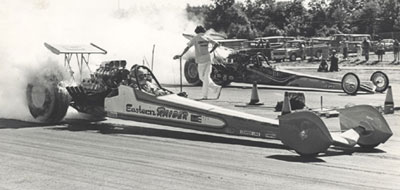 |
Rich Hanna, son of Eastern Raider patriarch Al Hanna, sent the photo at right, showing Bob Beaulieu blazing the hides in the wheel-pants-equipped Eastern Raider Top Fueler at Connecticut Dragway. According to Hanna, who pilots the GOJO jet Funny Car, the photo is labeled 1977 but must be 1976 based on the timeline that I assembled. Hanna also noted that it was Beaulieu’s red-light at the Maple Grove Dutch Classic in May 1977 that allowed Bob Edwards to advance to the next round in which he lost his life. Edwards, who entered the drag racing trivia books as the runner-up to Shirley Muldowney in her first Top Fuel victory, at the 1976 NHRA Springnationals, died when the front axle collapsed after a wheelstand, sending the car into the guardrail.
“Beaulieu red-lit the win away as they had Edwards covered,” Hanna said. “Bob told me they loaded up but before leaving, they watched the next round of eliminations from the fence where the accident occurred. Amazing how most accidents are a chain of events that maybe shouldn't have happened half of the time in the first place.”

 |
I also heard from Shawn Dill, who works on the Al-Anabi Top Fueler driven by Khalid alBalooshi and restores vintage race cars as a hobby. Restoring Terry Capps' 1973 Wheeler Dealer car is his latest project, which has been under way for a little more than two years (“Progress is slow when you travel as much as we do,” he noted) but is nearing completion. According to Dill, the car was originally built by Woody Gilmore with bodywork and wheel pants by Nye Frank.
“The car was updated several times by Al Swindahl and was run until the team debuted its new wide-cage/square-body car at Indy in 1980,” he reported. “The car then went through the normal decline, first a few years in Pro Comp with a blown big-block Chevy, and then the bracket races for almost 20 years with a small-block and Powerglide. The car was purchased by former Alcohol Funny Car owner Dr. Brian Friesen, and I have been working to return the car to its 1975 configuration.
“This project forced me to learn some of the history of the wheel pants. I think the ones on Breedlove’s slingshot were built by Quinn Epperly. Nye Frank certainly made most of the aluminum units on the left coast, but it seems that Bob Sweatt (El Toro AA/FA) may have had a hand in pulling a mold off of one of Frank’s creations and then reproducing them in fiberglass. It seems many of the Midwestern or Eastern cars had fiberglass units. Unfortunately, Bob and Nye are both gone, so I am unsure of my facts; maybe one of your readers can provide some clarification.
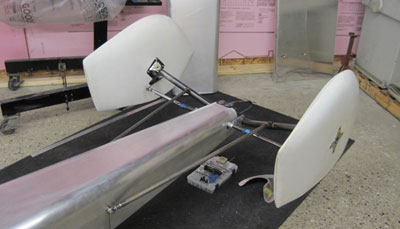 |
“Anyhow, I needed a set for my Wheeler Dealer restoration, and fortunately, my good friend Dave Crane in Michigan was able to help me with one of the fiberglass units that had been made some 30 years ago. I had a mold made and had a couple sets made. I thought they would be the ultimate garage art, paint them like Hot Tuna, Ivo, Keeling & Clayton, or whatever you want. I took one to the reunion in Bakersfield to stir up some sales, and much to my surprise, most people didn't recognize the shape in its unmounted, pale white gel-coated form. I actually had several people ask if it was a Boogie Board. Californians!
“Another side note is the wheel pants on the Barry Setzer liner in Garlits' museum are incorrect. I first suspected this just by looking at pictures; the originals were slightly longer and had a distinct shape as compared to all the other fairings. I confirmed my suspicion while at the museum by reaching my hand inside (don't tell Garlits I reached under the ropes!) to find it was fiberglass. I'm pretty sure a car built by two of the greatest METAL fabricators in recent memory would not have had fiberglass fairings. And the final proof came while visiting a friend who purchased the remains of Setzer’s race shop. Guess what he has hanging on the wall in his garage? The ultimate garage art: the original wheel pants still with their beautiful distinctive paint and two-bolt center brackets (all the others used a four-bolt star bracket). Small world; very, very small.”
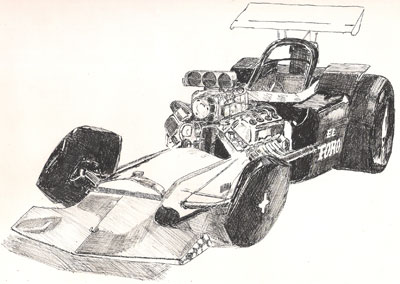 |
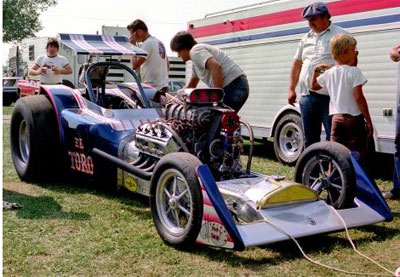 |
Several other Insider readers, most notably Gene Kozak and David Paine, verified Sweatt’s manufacturing of the fiberglass wheel pants.
“I built the Mr. Motec SS/AA car and took it to Bob Sweatt's paint shop for its paint,” recalled Kozak. “Working there with Bob on the car, he showed me the fiberglass wheel pants that he was making for the dragsters. I saw the two halves before they were put together. I also saw the molds that were used to make them. Bob was in partnership on these with Bob Farmer of Bob's Drag Chutes. Bob also had a set of them on his AA/FA called the El Toro."
I couldn’t find a photo of the El Toro with the wheel pants on, but Paine provided the pencil sketch above. The Tom Nagy-shot photo that I did find at right – part of an article on El Toro penned by Kepner and Danny White -- shows the car with an aerodynamic-minded front wing that shielded the front tires but was not full wheel pants.
According to the article, the pretty El Toro fuel altered won the prestigious Ridler Award at the Detroit Autorama in 1976, one of only two drag racing machines to win the award. The car was campaigned as a blown fuel altered until Sweatt put Doug Gordon in the seat for NHRA Division 3 competition as a AA/Altered (you can read Gordon’s account – and see a few more pics – here) but was sold in 1978 and parked for six seasons before being purchased by Rick Cortino, who raced it under the name Taboo in IHRA Top Sportsman and Top Dragster competition in the late 1980s and the 1990s. There’s no mention I can find of the car ever wearing the wheel pants, which would seem odd for a guy who built them, but maybe I just haven’t found it yet.

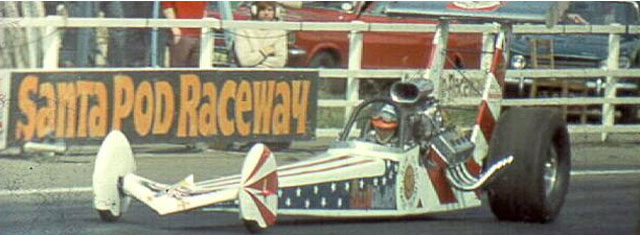 |
More English wheel pants: Pete Aughton passed along this photo of Tony Froome’s Sundance Top Fueler making a run at Santa Pod, courtesy of the accelerationarchive.co.uk galleries.

And finally, a big tip o’ the Insider cap to the Insider Nation as a whole for the continuing support and input, but this week, I gotta give it up to Insider regular “Chicago Jon” Hoffman and quarter-mile collectibles king Mike Goyda (goyda.com), both of whom sent me an extra copy of the 1977 NHRA Rulebook after my musing last week about the hole in our library. I never expected this kind of generosity and shared interest in getting the story straight, but I’ve seen it time and again.
 |
|
 |
The 1977 NHRA Rulebook, in which front-wheel fairings were outlawed in both Top Fuel and Alcohol Dragster, nonetheless featured a photo of Chase Knight's Golden Gator dragster with the wheel pants, shot in Indy the year before. |
Anyway, as you may recall, the reason I wanted the 1977 Rulebook was to try to close the information gap on the outlawing of wheel pants in Top Fuel in 1977 and see whether that same edict was true for Alcohol Dragsters. I’ve noted that several Alcohol Dragster teams ran the wheel pants in early 1977 before being asked to remove them, and this seems to be a classic example of, to quote from Cool Hand Luke, “What we got here is ... failure to communicate.”
Sure enough, on page 20, under Top Fuel Class Requirements, Fairings, in bold-face type: “Front wheel fairings are not permitted." Flipping back to the Pro Comp section on page 33, for both fuel and alcohol dragsters (AA/DA), the Class Requirements read: “Same as outlined under Top Fuel Eliminator.” The Class Requirements for Top Fuel stretch two and half pages, so I could see why NHRA wouldn’t have wanted to gobble up pages unnecessarily reprinting the same information, and, if you read the entire thing, there are enough references to AA/DA within the Top Fuel requirements to let you know that this was done on purpose. So, though it doesn’t specifically address the use of fairings in Pro Comp, the line drawn is pretty straight (if not 100 percent clear), which might explain why the alky fairings lasted only as long into 1977 as it took an NHRA official to see them. As to why Chase Knight’s wheel-pants-wearing Golden Gator Alcohol Dragster was on the cover … well, that’s anyone’s guess.
I'll see you Friday ...























